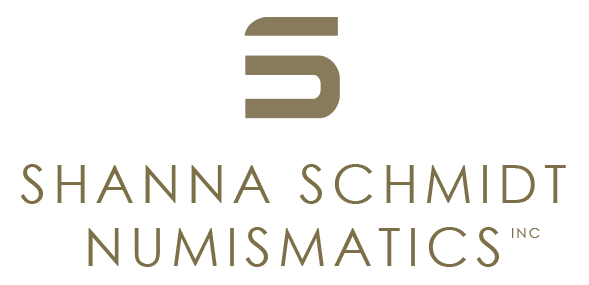Sicily, Syracuse. Dionysios I, 405-367 BC Unsigned but by Euainetos, c. 400-390
Sicily, Syracuse. Dionysios I, 405-367 BC Unsigned but by Euainetos, c. 400-390
AR Dekadrachm, 43.24g (36mm, 9h).
Charioteer, wearing long chiton, holding goad in his right hand and the reins in his left, driving a racing quadriga to left; above, Nike flying right to crown the charioteer; in the exergue on two steps, a panoply of arms / ΣΥΡΑΚΟΣΙΩΝ Head of Arethusa to left, wearing wreath of reeds, triple-pendant earring and necklace; around her head, four dolphins; behind, shell
Pedigree: From an old French collection
References: Pozzi 617. Gallatin R. IV/F. VI. SNG ANS 373. du Chastel XIII, 144
Grade: Love high relief and mostly complete. Some of the legend is partially worn. Some evidence of light cleaning marks. EF. (gk1802)
Scroll down for more information about this coin.
There are few coins of the Greek series that convey the artistic superiority of the die engravers at that moment in time. The dekadrachm of Syracuse is arguably one of those types. For so many coins the artist that created the dies remains anonymous for eternity. Two artists, Kimon and Euainetos are synonymous with this large denomination coin. While their signed issues are more costly to obtain, the unsigned ones are alike in all aspects aside from the signature. The detail of the engraving is worthy of any Renaissance painting. The quadriga most often relegated to the reverse of coins is the obverse. There is movement and aggressive activity evident from the horses if one pauses to look at their strained heads in various directions. A charioteer is wielding a goad in his outstretched hand to push them on. There is a suit of armor in the exergue that ties military might into the equation. The reverse (often mistaken for the obverse) is a classically beautiful rendition of Arethusa, the goddess of the seas. She is surrounded by four dolphins, other creatures of the sea. Her hair is placed beautifully on her head and she has a look of solemnity.
While the dekadrachm is a large denomination coin and unlikely ever used for ordinary means, there are far more of them available then other large size issues. They were struck around 400 BC in Syracuse, which at the time was a city of great power and expansion.

